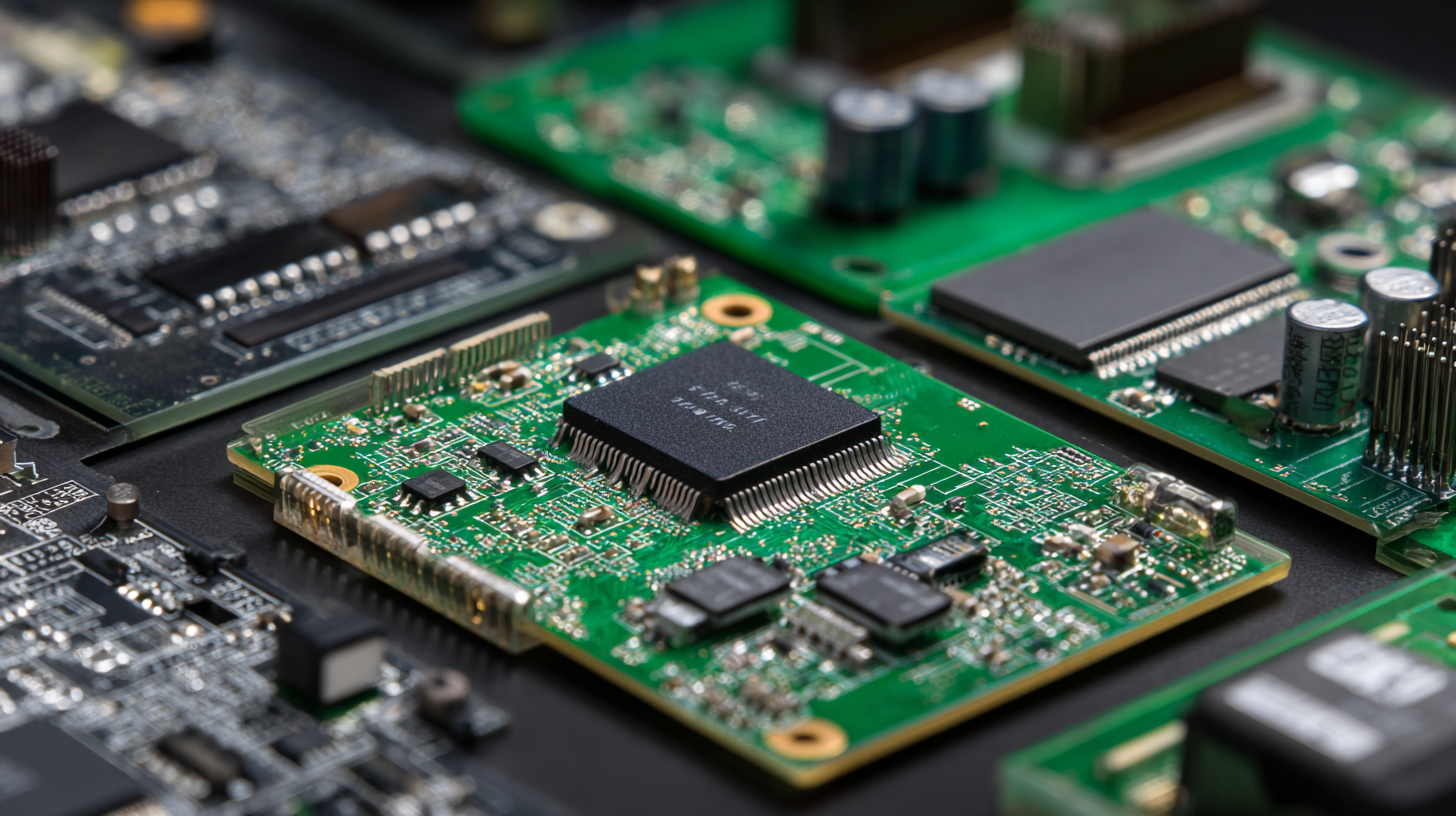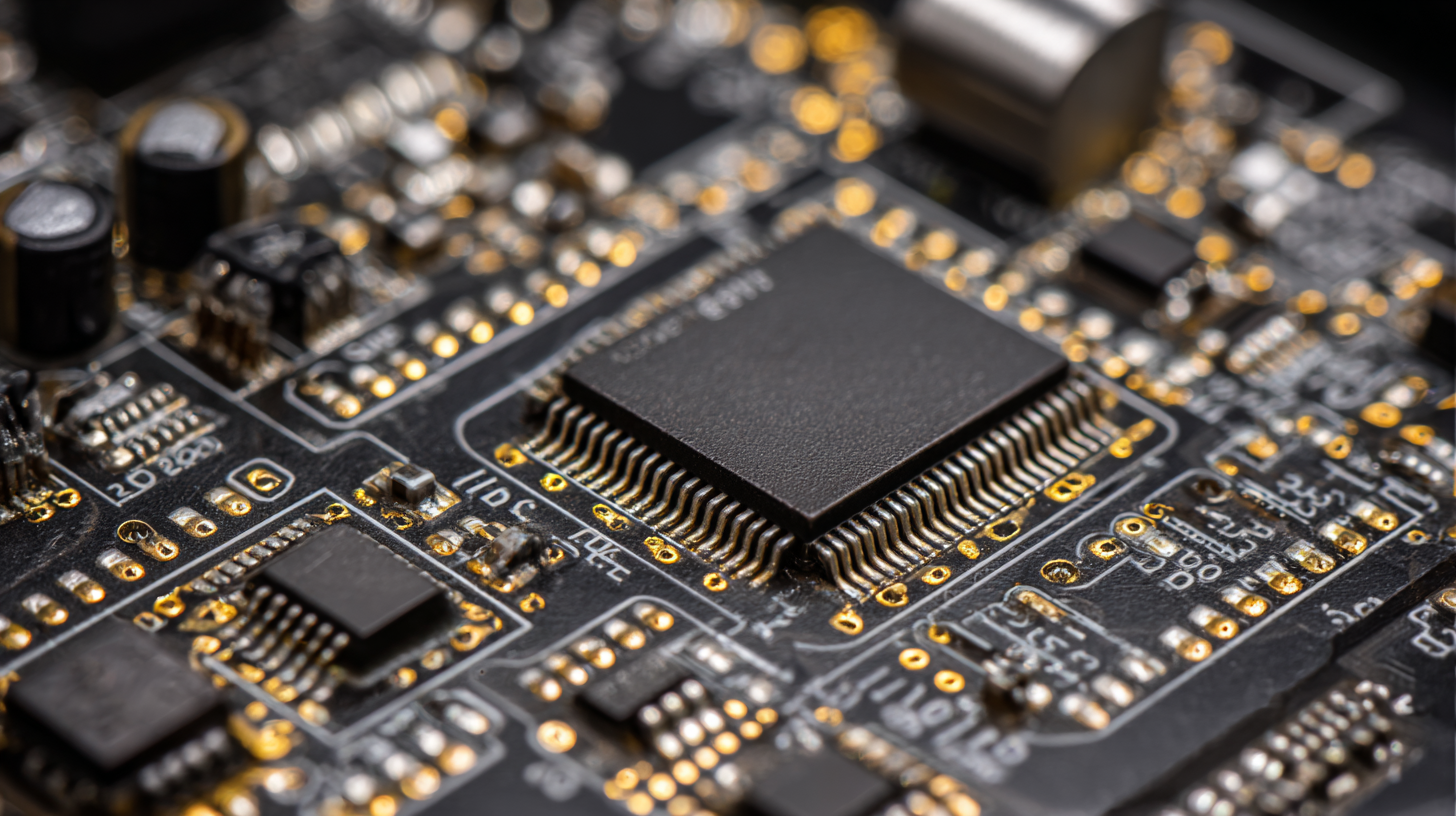Best PCB Electronics: A Comprehensive Comparison of Top Choices for Your Projects
In the rapidly evolving world of technology, the demand for reliable and efficient pcb electronics has surged significantly, with the global printed circuit board market projected to reach USD 82.8 billion by 2027, according to a recent report by Mordor Intelligence. This growth can be attributed to the increasing adoption of electronic devices across various sectors, including automotive, telecommunications, and consumer electronics. As designers and engineers embark on new projects, the importance of selecting the right PCB components becomes paramount. This blog aims to provide a comprehensive comparison of the top choices available in the market, highlighting their features, benefits, and performance. By equipping professionals with the knowledge necessary to make informed decisions, we can foster innovation and efficiency in countless applications reliant on pcb electronics.
Emerging PCB Technologies Transforming Electronics in 2025
As we look ahead to 2025, the landscape of the printed circuit board (PCB) industry is poised for transformative changes, primarily driven by the surge in artificial intelligence applications.
The integration of AI technologies into PCB manufacturing is not merely a trend; it signifies a strategic pivot towards enhanced efficiency and innovation.
This shift is underscored by the anticipated market growth, with projections indicating a staggering increase valued at USD 26.8 billion between 2025 and 2029.
The rapid advancement of AI is revolutionizing product designs and enabling manufacturers to adapt more swiftly to market demands, thus propelling the entire electronics sector into a new era.

Moreover, emerging technologies such as flexible electronics are set to challenge conventional rigid circuit designs, enabling the creation of ultra-thin and stretchable devices.
This innovation paves the way for next-generation gadgets, enhancing consumer experiences and allowing for greater application in various fields, including wearables and smartphones.
Additionally, initiatives like the Learning Lounge at events such as the IPC APEX EXPO highlight the industry's commitment to education and collaboration, ensuring that professionals remain at the forefront of these technological advancements.
As the PCB sector evolves, staying informed and adaptable will be crucial for success in this dynamic environment.
Key Features to Look for in PCB Electronics for Your Projects
When embarking on your PCB electronics projects, understanding the key features is essential for selecting the right components. One of the most crucial elements is the board material. Common choices include FR-4, a fiberglass material that offers excellent electrical insulation and thermal properties. For high-frequency applications, consider using Rogers or PTFE boards that minimize signal loss.
Another important feature to evaluate is the copper thickness. Thicker copper layers can handle higher currents, making them ideal for power applications. When in doubt, a standard thickness of 1 oz/ft² is suitable for most general-purpose projects, but you might want to opt for 2 oz/ft² or more for demanding circuits.
**Tip:** Always check the compatibility of your PCB design software with the chosen materials and components to avoid potential issues during the manufacturing phase.
Lastly, the number of layers is a significant consideration. While single-layer boards are easier to design and manufacture, multi-layer boards enable more complex circuitry and better performance. Choose based on your project needs, complexity, and future scalability.
**Tip:** Simplifying your design wherever possible can reduce costs and manufacturing challenges, particularly useful for prototype stages.
Best PCB Electronics: A Comprehensive Comparison of Top Choices for Your Projects
| Feature |
Value A |
Value B |
Value C |
| Layer Count |
4 Layers |
6 Layers |
8 Layers |
| Material Type |
FR-4 |
CEM-1 |
Polyimide |
| Copper Weight |
1 oz |
2 oz |
3 oz |
| Min Line Width |
0.2 mm |
0.15 mm |
0.1 mm |
| Thermal Conductivity |
0.3 W/mK |
0.5 W/mK |
1.0 W/mK |
| Max Temperature Rating |
130°C |
150°C |
180°C |
Comparative Analysis of Popular PCB Materials and Their Applications
When it comes to selecting PCB materials, understanding the properties and applications of each type is critical. Among the most widely utilized materials, FR-4 stands out due to its excellent mechanical and thermal properties. According to a report by IPC, FR-4 accounts for approximately 80% of the global PCB market due to its versatility and cost-effectiveness, making it a favored choice for consumer electronics and industrial applications.
 Another noteworthy material is Rogers' high-frequency laminates, which are designed for microwave and RF applications. Research by Rogers Corporation indicates that their materials, such as Rogers 5880, offer a low dielectric constant and low loss tangent, making them ideal for applications like 5G networks and satellite communications. The demand for low-loss materials in high-frequency applications has surged, with forecasts suggesting a growth rate of 9.5% in this sector by 2025.
Another noteworthy material is Rogers' high-frequency laminates, which are designed for microwave and RF applications. Research by Rogers Corporation indicates that their materials, such as Rogers 5880, offer a low dielectric constant and low loss tangent, making them ideal for applications like 5G networks and satellite communications. The demand for low-loss materials in high-frequency applications has surged, with forecasts suggesting a growth rate of 9.5% in this sector by 2025.
Lastly, aluminum PCBs are increasingly popular for LED lighting applications due to their superior thermal conductivity. A market analysis by Research and Markets reports that the aluminum PCB market is expected to reach $2.5 billion by 2025, driven by the rising trend of energy-efficient lighting solutions. This illustrates the importance of material selection in enhancing not only the performance but also the longevity of electronic devices across various industries.
Top Strategies for Optimizing Your PCB Design Process
Optimizing your PCB design process is crucial for the success of any electronics project. One effective strategy is to adopt a modular approach. By breaking down your design into smaller, manageable sections, you can focus on optimizing each segment individually. This not only enhances the workflow but also allows for easier troubleshooting. Utilizing modular design tools in software can streamline the integration of components, making it simple to adjust as requirements evolve.
Another essential strategy is to prioritize design for manufacturability (DFM). Engaging with manufacturers early in the design phase can provide insights into potential production issues and material constraints. By prioritizing components that are more readily available and easier to fabricate, you can reduce the risk of delays and complications during the manufacturing stage. Additionally, employing simulation tools to predict electrical performance before the physical prototype is created can save time and resources, ensuring a smoother design process overall.
Lastly, consider implementing iterative testing throughout the design phase rather than waiting until the final product is complete. This approach allows for continuous feedback and refinement, making it possible to address design flaws or inefficiencies early on. Embracing these strategies will not only optimize your PCB design process but also enhance the overall quality and reliability of your electronic projects.
Comparison of PCB Design Optimization Strategies
Future Trends in PCB Manufacturing and Sustainable Practices
As the demand for electronic devices continues to grow, the future of PCB manufacturing is evolving rapidly. One of the most significant trends is the move towards sustainable practices that minimize environmental impact. Companies are increasingly adopting eco-friendly materials and processes, such as using biodegradable substrates and non-toxic inks. These innovations not only help reduce carbon footprints but also appeal to consumers who are becoming more environmentally conscious. Embracing sustainability in PCB manufacturing can lead to a competitive edge, as green certifications become more crucial for marketability.
Additionally, advancements in technology are driving the integration of automation and smart manufacturing techniques in PCB production. Automated systems enhance efficiency and accuracy, leading to reduced waste and quicker turnaround times. The adoption of IoT-enabled devices in manufacturing processes allows for real-time monitoring and optimization, further streamlining production. As manufacturers embrace these future trends, they position themselves not only to meet the growing market demands but also to contribute positively to the planet, paving the way for a more sustainable electronics industry.